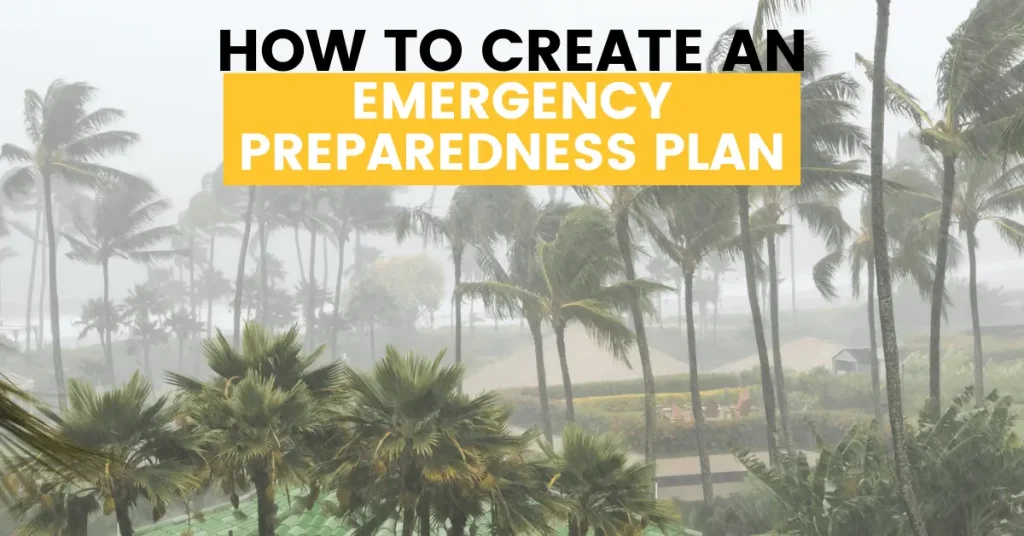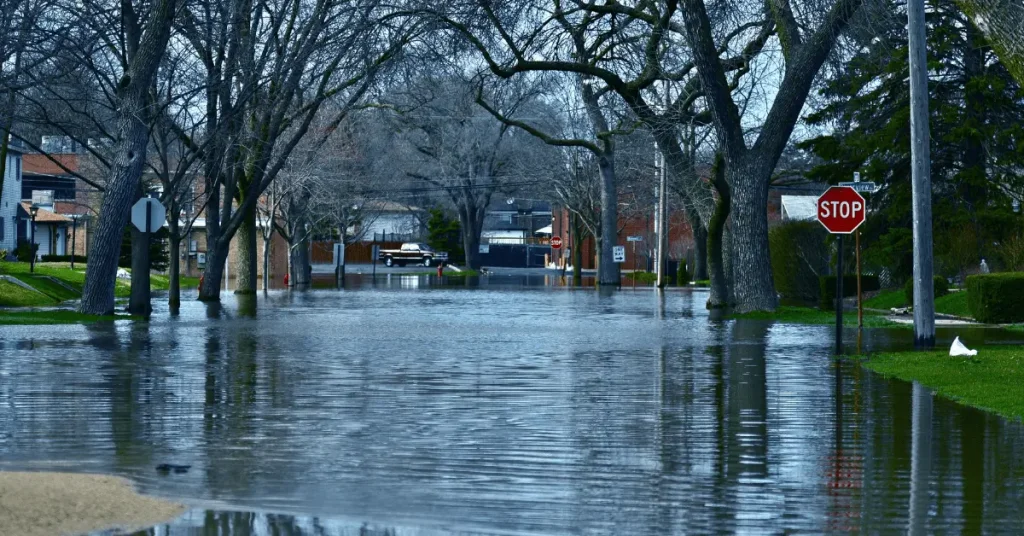According to the National Centers for Environmental Information, In 2022, the United States experienced 18 weather-related and climate disaster events, each causing losses exceeding $1 billion. These events included a drought, a flood, 11 severe storms, 3 tropical cyclones, a wildfire, and a winter storm. These events resulted in the tragic loss of 474 lives and had a significant impact on the affected communities and their economies.
Disasters can strike at any moment, and it is essential to be prepared. Having a comprehensive emergency preparedness plan in place can help you and your loved ones stay safe and secure during an unexpected event. In this article, we will guide you through the steps of creating an emergency preparedness plan and provide tips on how to be fully prepared in case of an emergency.

The first step in creating an emergency preparedness plan is to assess the risks in your area. This includes natural disasters such as earthquakes, hurricanes, and floods, as well as man-made emergencies such as terrorism and pandemics. By understanding the risks, you can prioritize your preparedness efforts and ensure that your plan addresses the most pressing threats.
It is essential to understand the specific risks in your area, as well as their potential impact. For example, if you live in an area that is prone to earthquakes, you should prepare for the possibility of a strong earthquake and its aftermath, including potential power outages and road closures. If you live in a coastal area, you should prepare for the possibility of hurricanes and flooding.
To assess the risks in your area, you can use resources such as the Federal Emergency Management Agency’s (FEMA) website, your local government’s emergency management office, and the National Oceanic and Atmospheric Administration (NOAA) for information on natural disasters. You can also consult with local authorities and law enforcement to determine the risk of terrorism and other man-made emergencies.

Once you have assessed the risks, it is time to gather important information that you will need in case of an emergency. This includes your home and work addresses, phone numbers, and email addresses of all household members, medical information, and emergency contacts. You should also keep a list of essential items such as medication, first-aid supplies, and important documents in a safe place.
Having this information readily available will help you quickly and effectively respond to an emergency. It is also a good idea to store this information in multiple places, such as on your phone, in a fireproof and waterproof safe, and with a trusted friend or relative who lives out of town.
It is crucial to have a communication plan in place to ensure that all household members can stay in touch in case of an emergency. This includes designating a meeting place, agreeing on an out-of-town contact, and having a plan for communicating if phone lines are down.
In case of an emergency, it may be difficult to reach each other by phone, so having a designated meeting place is essential. You should also choose an out-of-town contact who can be reached by all members of your household. This person will be responsible for checking on the well-being of your loved ones and relaying important information if necessary.
If phone lines are down, you can use social media, texting, and other forms of communication to stay in touch. You should also have a backup plan for communicating, such as a whistle, a flare, or a specific meeting place, in case traditional forms of communication are unavailable.
An emergency supply kit is a critical component of any emergency preparedness plan. During an emergency, it’s possible that you’ll be on your own for a few days. Being ready means having a sufficient supply of food, water, and other essentials to last for an extended period. A disaster supply kit contains the fundamental items that your household may require in the event of a crisis.
To effectively prepare your emergency kit, pack items in airtight plastic bags and store the entire kit in one or two portable containers like plastic bins or a duffel bag. A comprehensive emergency supply kit should consist of the following essential items:
For a complete list, visit https://www.ready.gov/kit.
In addition to the essential items mentioned above, it is essential to include a reliable power source in your emergency supply kit. This is where a solar generator and battery supply come in.
A solar generator uses renewable energy from the sun to power your essential devices and appliances during an emergency. It is a clean, quiet, and efficient source of power that can provide essential energy in areas without access to electricity. A solar generator can be used to charge your phone, power a small refrigerator, or even run a laptop.
In addition to a solar generator, it is also recommended to have a backup battery supply. This can be in the form of rechargeable batteries, power banks, or even car batteries. Having a backup battery supply ensures that you have access to power even if the solar generator is not in use.
Regularly reviewing and practicing your emergency preparedness plan is crucial in ensuring that every household member is prepared and confident in their role in the event of an emergency. By going through the plan with everyone, you can identify and address any gaps or misunderstandings, and make any necessary updates or changes.
During the review and practice sessions, it is important to include a discussion of the different types of emergencies that can occur, such as fires, earthquakes, hurricanes, or tornadoes. This will help everyone to understand the different types of emergencies and how to respond in each situation.
In addition to a discussion of the plan, it is also beneficial to conduct a mock emergency drill. This can help everyone to understand how to evacuate the house, how to turn off utilities, and where to go in case of an emergency. By simulating an emergency scenario, everyone will become familiar with the plan and be more confident in their ability to respond in an actual emergency.
It is important to make sure that everyone, especially children, knows the emergency plan and their role in it. Assign specific tasks to each person, such as turning off utilities, and make sure they understand the importance of their role.
An emergency preparedness plan is essential for ensuring the safety and well-being of you and your loved ones. By following these steps, you can create a comprehensive plan that will help you navigate any unexpected event with confidence. Take the time to assess the risks in your area, gather important information, create a communication plan, make an emergency supply kit, and practice your plan regularly.

